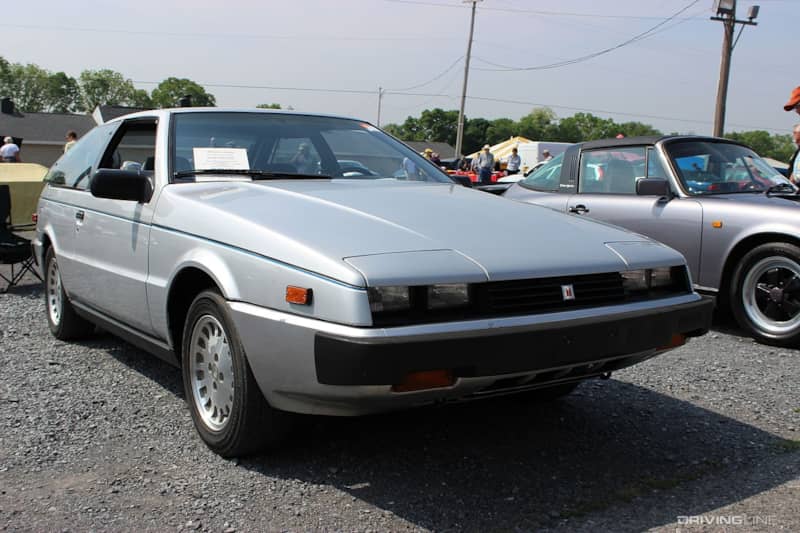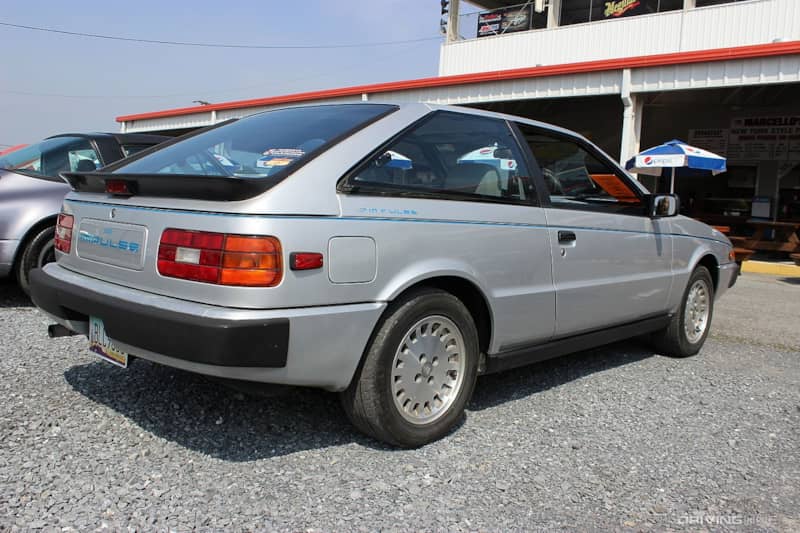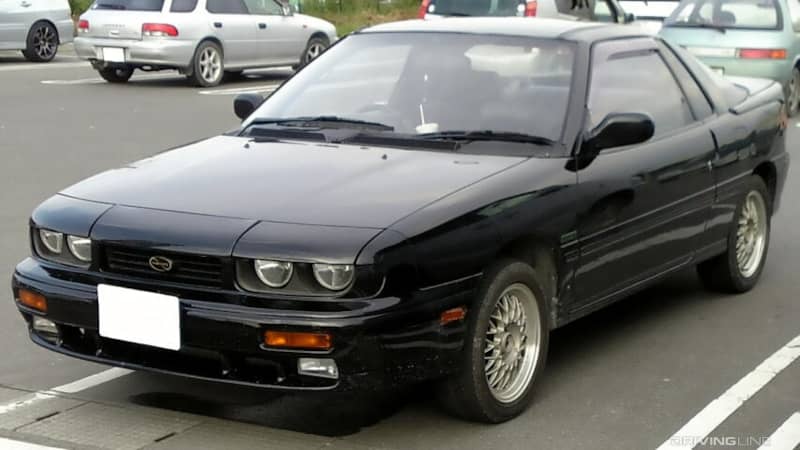1983-1993 Isuzu Impulse: Giugiaro's Forgotten Turbo Hatch
"Handling by Lotus." It was the call-out badge that puzzled more than a few performance car fans when they looked up to see that the vehicle boasting its British link was in fact a Japanese hatchback that most would have had to strain to identify.
In the early '80s, the Isuzu Impulse was the very definition of stealth import performance. With zero brand recognition, a scant dealer network and American enthusiasts just waking up to what imports had to offer from a performance perspective, the Impulse would spend a decade in the dark, re-emerging briefly at the beginning of the '90s to shine after a hi-tech redesign before leaving the market entirely.
Where did this unusual wedge come from? And why did it disappear with relatively little fanfare right at the peak of the Japanese sports car bubble in the early 1990s?
It Takes A Village
The answer to that first question is that the Isuzu Impulse had many parents. In 1978, Isuzu was a global concern eager to shed its industrial image and break into the American passenger car market. To do so, it turned to a familiar name: Giorgetto Giugiaro, the Italian designer who would unveil a narrow-at-the-front compact hatchback concept commissioned by the company at the Tokyo Motor Show.

Keep in mind, however, that Isuzu has almost always had a cozy corporate relationship with General Motors, with the American automaker having owned a sizable portion of the brand for close to a decade at that time. It's here that things begin to get truly multi-cultural, for while the sports car that would become the Impulse would have its lines penned by Giugiaro, it would sit on a platform lifted from the GM portfolio.
Imagine the scene: a gaggle of Chevrolet Chevettes sitting in the Italdesign showroom, with Giorgetto and his team tearing apart their pedestrian body panels to get at the T Series chassis sitting underneath. The "Ace of Clubs" prototype that intrigued Japanese crowds hid its modest underpinnings well, and within short order it debuted in its home country as the Isuzu Piazza.

The Japanese-American-Italian connection wasn't the end of the Piazza's globe-trotting influences. The final piece of the puzzle was the suspension tune by Lotus that would facilitate the car's famous sticker. Again, GM was to thank for this comprehensive chassis-and-tire upgrade (that would appear first in Japan, and then in America in 1988), as the General had invested in and was calling the shots at the British concern when the Piazza was being developed.
Turbo Power
After several years of sales in Japan, Isuzu brought the Piazza to America, where it was renamed the Impulse. It hit the ground running with a 90hp, 2.0L four-cylinder engine and transmission choices that included a four-speed automatic and a five-speed manual. This was quickly followed by a unique 140hp 2.0L turbo in 1985. The forced induction engine came with a number of innovations, including the Isuzu I-TEC electronic control system that could squeeze between 6.7 and 8.5 pounds of boost into the motor without the need for high octane fuel.
With 166 lb-ft of torque on tap, the Impulse was already a fairly confident performer, able to hit 60 mph in 8.5 seconds. This was on par with quick cars of the day. On top of that, the Isuzu had the looks needed to draw eyes away from Celica Supras and ZXs, especially the all-white Impulse RS Turbo that arrived in 1987. With its limited-slip rear differential and beefed-up chassis details, it laid a legitimate claim on being one of the most fun-to-drive, yet affordable sports cars on the market. Even base models would upgrade the following year by way of a 110hp, 2.3L four-cylinder.

By 1990, Isuzu had decided to move the Impulse away from its rear-wheel drive roots and onto another shared GM platform, this time a front-wheel drive setup that would be shared with the Geo Storm. Isuzu would design the new Impulse's sheet metal in-house this time, with the result being an attractive, but not ground-breaking coupe that retained its unique "eyebrows" over its headlights, paired with a more traditional greenhouse. A hatchback and rare wagon body style were also available.
Initially offering a naturally-aspirated 1.6L dual-overhead camshaft four-cylinder that delivered nearly as many horses (130) as the older turbo, it would be joined in 1991 by a 160hp turbo version of the same motor that was also good for 150 lb-ft of torque. This unit was yoked to an all-wheel drive system, and was only available for a single model year, as in '92 it was replaced by a 140hp, 1.8L engine. The Turbo cars were quick enough to slice a second and a half off of the original turbo Impulse's 0-60 time.

The "Handling by Lotus" arrangement also continued with the second-generation Isuzu Impulse, despite its dramatically different platform, and the car featured a unique passive rear steering system in Turbo RS models. What did Lotus get in return? The use of Isuzu's four-cylinder acumen in its own Elan front-wheel drive roadster.
Right Moves, Wrong Time
Despite that the first-generation Isuzu Impulse was generally well-reviewed as a vehicle that could hold its own with more expensive and better-known brands, it never achieved its goal of breaking Isuzu into the American mainstream. By the time the redesigned Impulse was ready to go, it enjoyed a mere three years of production (with one extra in Canada under the Asuna brand name) before a number of factors conspired to end Isuzu's foray on this side of the Pacific.
With sales gradually weakening throughout its first decade in the U.S.—by 1989 less than 17,000 Isuzus of any description made it out the door, less than half its best-ever year—the economic argument for continuing to pursue retail customers was evaporating. Then there was the collapse of Japan's economic bubble, a debilitating stroke that the country's economy still has yet to fully recover from, and one which executed a long list of overseas sports cars more distinguished than the Impulse.
Finally, General Motors became increasingly unwilling to play ball with Isuzu product planners who wanted access to a larger slice of the American automotive pie, restricting them to smaller and smaller segments until the company bailed wholesale on the country after 1993 and returned to building trucks and commercial vehicles.
Today, the Isuzu Impulse is remembered—when it is remembered at all—as a unique, stylish and legitimately engaging hot hatch that simply couldn't get its timing right to adequately attract a critical mass of budget-conscious sports car fans.







